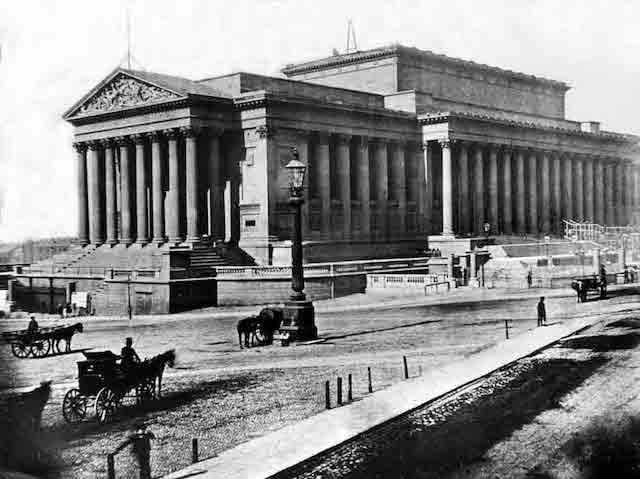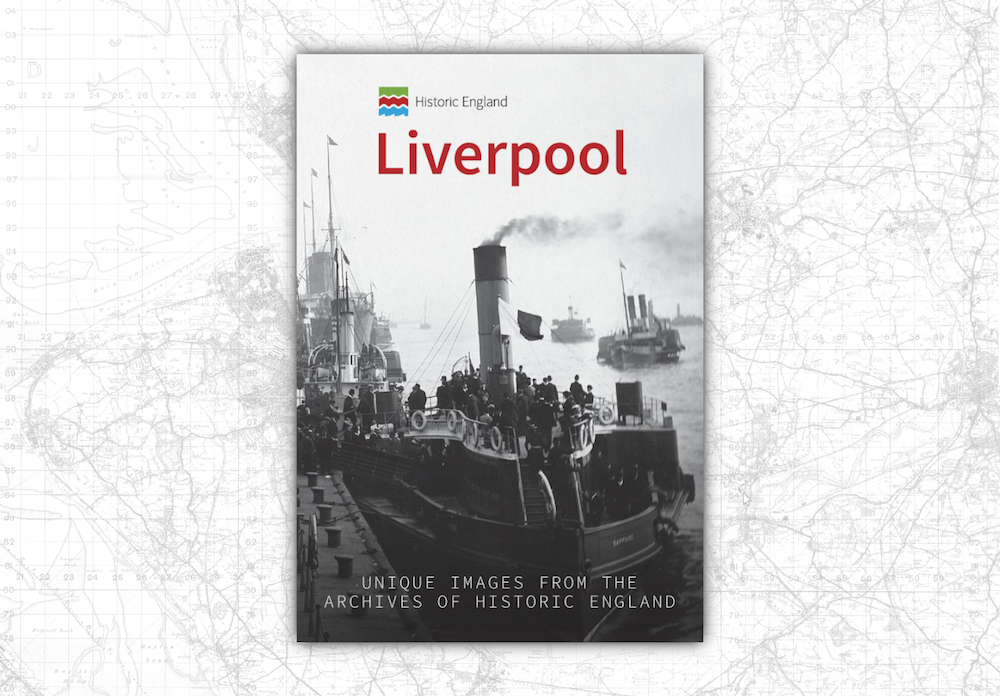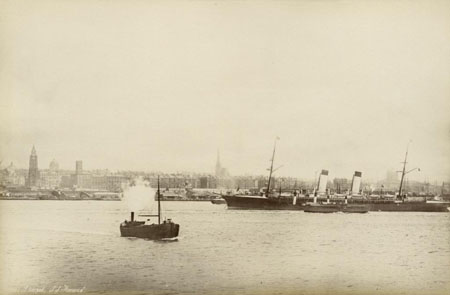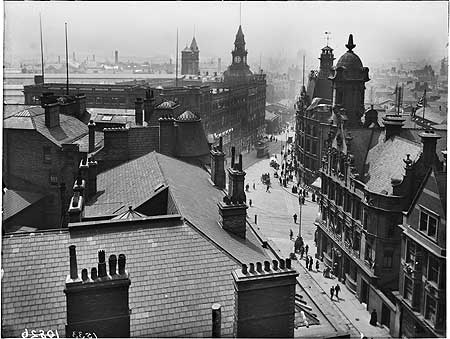Historic England are the government’s adviser on the historic environment, so they have a duty to encourage the enjoyment of England’s history. Part of this remit is to manage the Historic England Archive, from which a new series of books takes its content. The volume I review here is, you’ll be shocked to learn, Liverpool.
The Historic England Archive holds over 12 million photographs, documents, plans and drawings covering the whole country. They run a public service where you can contact them to find out what they have, and get copies made for you.
But you don’t need to do that right now, as Hugh Hollinghurst has put together a neat little collection published by Amberley.
Old photographs of Liverpool
There are literally a billion books containing archive photographs of Liverpool. I’ve reviewed some of the best (and some of the worst) on here. I judge the books by their cover, and also by their content, and most importantly by the captions on the images.
Many books are content to give you about 15 words on the old photo, giving very little context or detail, and often getting things wrong. It’s not that this book is entirely error free (there’s one big blooper in there) but the length of the captions and the lack of nostalgic rose-tinted spectacles mean they’re not an issue.

The book is 95 pages long and has photos and also paintings from a wide gamut of Liverpool’s history. The earliest photograph is possibly the earliest photograph of Liverpool – St. George’s Hall, in 1855. (What we would recognise as photography had barely been around for a decade and a half by this point).
The book includes brand new photography, as well as images from the 1980s and 90s to give context. (And because, it pains me to say, those are now decades themselves part of history…)
Landscape history in archive photographs
It’s no secret that old photographs are a great reminder of the layout of the former city. It’s fascinating to see places like the Pier Head without its Three Graces. George’s Dock was divided into three and filled in around the turn of the 20th century, and Liverpool’s three gems erected over the next two decades.
The photos are in batches, so we see a couple charting the development of the Pier Head from the 1990s to today. We also see the Goree Piazzas from different angles, revealing the changing waterfront. There are explicit links between the captions, so this is much more than a scattershot ‘photo album’ approach.
There’s a fascinating panorama in the new book which shows a golden skyline, almost completely uniform in height. The only things that venture above the general roofline are the Customs House and St. Nicholas’s church. The age of the photograph and this uniformity lend it the appearance of Venice.
It’s a post-Blitz image which opens the book, and the first section, ‘Docks’. An aerial image, the most surprising thing about it is the neatness of it. It’s much like you’d expect a post-nuclear city to look. No life, no rubble, just clean squares where buildings once stood and the Customs House’s foundations like an I-beam embedded in the Earth.
Changing Liverpool landscape
Both the Customs House and the Sailor’s Home are some of Liverpool’s most famous and regretted losses. Hollinghurst talks about these demolitions with admirable neutrality. The Customs House had been identified as a difficult building to use or re-use as early as 1910, and the ‘prison-like’ interior of the Sailor’s Home condemned it once it required telegraph poles to shore up its frontage (see page 8 for that striking image). No doubt counter-arguments can and will continue to be made, but its interesting to hear the evidence.
Historic England’s Aerofilms archive has a wealth of aerial shots of the docks, and a couple are in this book. Here we’re treated to some of the less well-known docks, like Bramley Moore and Huskisson in the north. We see handsome liners and hefty cargo ships coming and going. We’d do well to remember that it isn’t just the Albert Dock that Liverpool’s wealth rested on.
Historic details
As well as the wide shots of historic landscapes, Liverpool includes interiors and details. There are high quality shots of windows in the Port of Liverpool Building, and carvings on the Cunard Building. Photos show lavish Edwardian interiors of the Cunard and White Star Buildings, including an office in the latter, beautifully neat with gorgeous brass lamps and elaborate ceiling mouldings.
A favourite of mine was the view out of the fifth floor of the second Adelphi Hotel. It looks south west down Ranelagh Street and you can make out Central Station. There’s the faint outline of the Customs House (that place again!) and, according to the caption, Birkenhead. (Perhaps that’s easier to see on the full size negative.)
Which of the great and good of previous centuries might have looked out on this vista, waiting for their ship to come in?
Trams and railways in old Liverpool
As well as buildings and docks, the old photos take in stations and rails. The Overhead Railway features on an impressive aerial shot, snaking like a giant Scalextric past Herculaneum and the other northern docks.
Other photos show ground-based scenes. There’s a busy intersection on the Strand in one. Little more than the stanchions which held the rails up remaining in another. (This allows Hollinghurst to date that particular image to 1957).
History of Liverpool in eight chapters
Hollinghurst divides the book into eight chapters (amongst them Transport, Docks, Leisure and Homes), but it’s clear to see the connections between them. Even the Homes chapter includes archive images of Goodison Park and the industrial landscape of Aintree (with its Hartley’s Village).
The book brilliantly captures the intertwining elements of Liverpool’s history. The amount of information in the captions makes them almost more than mere captions. Some of the photos are rarities or otherwise unusual.
As someone who has seen hundreds of old images of the city over the years it’s getting harder to find something new. I think the depths of the Historic England Archive have yet to be fully plumbed! My only real gripe is that it’s not easy to cross-reference this book with the archive itself. The images from Historic England are labelled as such, but the reference numbers are not here. You’ll have to do an intelligent search on the Historic England Archive website to find them.
Get the book
Liverpool: unique images from the archives of Historic England is written by Hugh Hollinghurst with Historic England. It was published in 2018 by Amberley Press.
You can get it from Hive, which helps local bookshops, or Amazon UK (affiliate links) or direct from Amberley’s website.
Two disclaimers: I used to work for the Historic England Archive (when it was the National Monuments Record, part of the then English Heritage), and also I was honoured to see my own book, Liverpool: a landscape history recommended in its opening pages, next to my favourite Liverpool volumes. Still, I think this book is worth checking out, even if you think you’ve see every old photograph of Liverpool.



